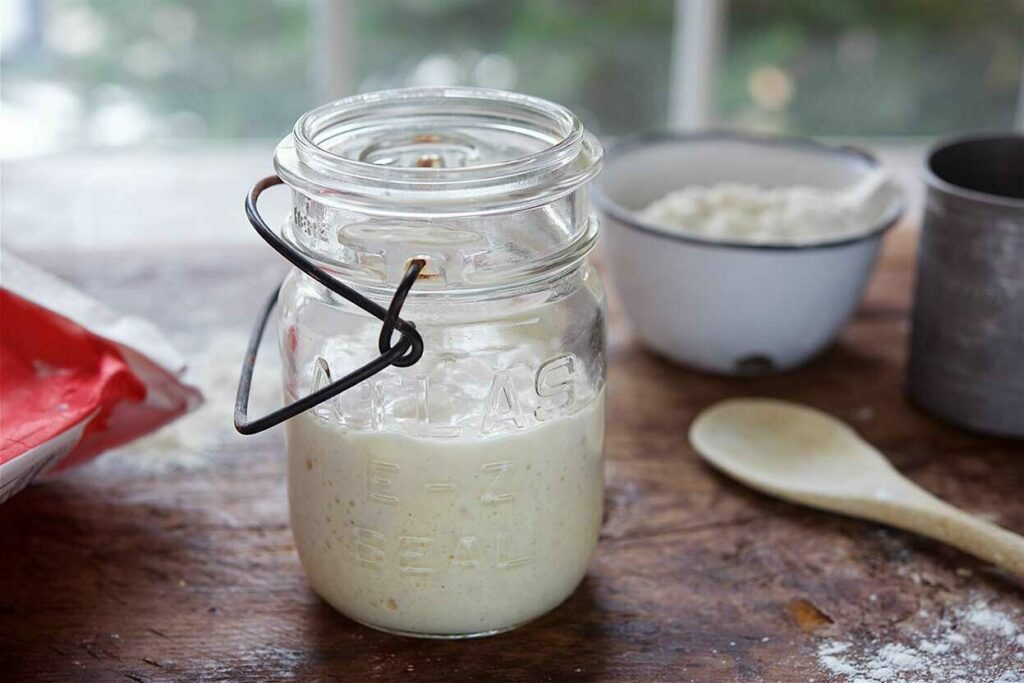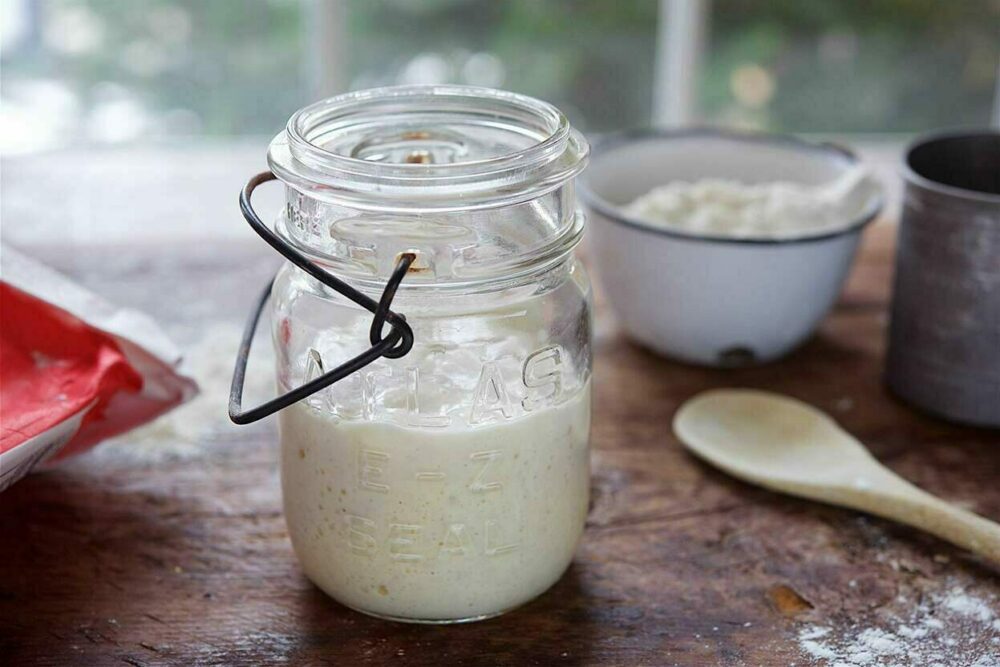Family Traditions
So how does one answer the question “What is sourdough starter”? Sourdough starter is so much more than the sum of its ingredients. Since sourdough starter is often passed down from generation to generation it often represents family traditions, relationships, and community ties. Each starter has its own personality and texture-based upon moisture levels and local microbial makeup.
 Exactly What is Sourdough Starter?
Exactly What is Sourdough Starter?
Sourdough starter is used to make sourdough bread. Dating back to ancient Egypt, sourdough bread is the oldest leavened bread in the world and is different from other breads since it uses starter instead of active dry yeast.
Basically, a sourdough starter is a fermented dough that uses a lactobacillus and yeast culture as a leavening agent. It is made up of flour, water, wild yeast, and bacteria. Wild yeast is what causes the bread to rise by producing carbon dioxide. The bacteria sour the dough and give the bread the sour flavor.
How does it work?
Combining these simple ingredients causes the wild yeast to break down the sugar in the flour which starts the leavening process. The sugars in the flour feed the wild yeasts and they begin to multiply. The multiplying yeast creates carbon dioxide which makes the bread rise
This is a quite simple explanation, but I believe it is enough to give you a general idea as the how sourdough starter is used to make bread.
What is the difference between sourdough starter and yeast? What is sourdough starter?
The biggest difference between bread made with sourdough starter and bread made with dry yeast is the source of the yeast. The yeast most often used today can be purchased in the store and has been preserved and dried to create a powder that becomes active when adding water. The yeast fungi which then feeds on the sugar and starch to make your bread rise. In contrast, sourdough starter keeps the yeast fungi alive and growing.
Dry yeast is faster than using a sourdough starter.
How do you make a sourdough starter from scratch?
Making a sourdough starter is not difficult since it contains 3 basic ingredients: flour, water, and salt (optional). There are many recipes online but here are some of our favorites:
This is one of the best recipes online because it offers tips and techniques from several experienced bakers to help you avoid some of the pitfalls of making this recipe.
Sylvia has a great blog and takes the time to show you how to make a sourdough starter step-by-step. She includes a video to help you understand the process.
If you have questions about sourdough you will probably find your answers at Holy Cow Vegan. Vaishalia has a robust Q&A section on her site where I’m sure you will find answers.
For a more in-depth look at sourdough baking you might want to check out King Arthur Baking’s Sourdough Baking – The Complete Guide.
Create your own tradition
Now we’ve answered the question “what is sourdough starter”, what are you waiting for? Now is the perfect time to start your own traditions using sourdough starter. Try out some of the recipes and when you find your favorite be sure to pass it forward to your family and friends.
I would love to hear about your experiences. Please drop me a line below.
[content-egg-block template=offers_list]



I named my sourdough starter, Brad. I learned from watching someone’s YouTube video that we should name our sourdough starter. My first attempt was a failure, but that didn’t stop me from trying again.
That’s when I named it Brad. The first few days are the hardest, as all sourdoughs act differently in the beginning stages. Sometimes, you may wait up to 2 days before you need to feed him again. I definitely recommend people checking out the links you gave in the article for more information. It can take anywhere form 7-14 days for a sourdough starter to settle down.
At first, the smell has a pronounced not so good sour aroma. That’s because the bad bacteria are winning the war. However, after a few days it will smell more “natural” and that’s because the yeast has beaten the bacteria and now you can feed your sourdough starter daily and he’ll double in size in 7 hours or less.
If you aren’t cooking frequently, it is safe to keep your sourdough starter in the fridge. It just slows down the process and it won’t kill it. Eventually, I had to let Brad go because I wasn’t baking enough and you have to keep feeding him flour.
Oh! One suggestion for everyone! As you dispose of 75% of your starter when you are feeding it each time try putting some in with your pancake mix, nummy!
Hi Les! Great information – thanks for sharing your experience. It’s always fun to hear each unique experience!
Hi Les,
Great information you have in this article. I love your list as well.
And the answer your question ;what are you waiting for?
I’m not waiting at all. I’m starting my own traditions today using sourdough starter. I will try some of the recipes and when I
find your favorite i will come back to tell you and also pass it forward to your family and friend.
thanks.
I’m so glad to hear that Albright! I love the thought of you creating something that will be around for generations!
Hello there, I feel really happy to be here and this is something that I have see hearing a lot of thing about it form my wife and I really wanted to know more about it, and getting to see it here is one thing I really appreciate. I too now have a full understanding of it and it’s really nice. Cheers
Thanks Justin!